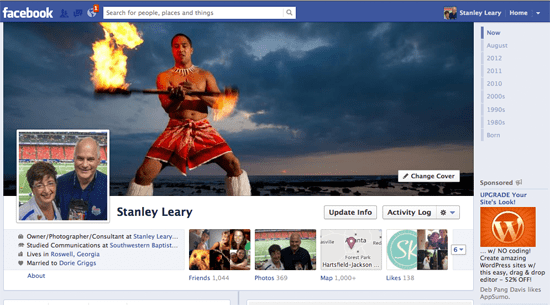Concept of free explodes
Chris Anderson wrote a very compelling book Free: The Future of a Radical Price, in 2009. The book was timely because it was addressing the disruptive behavior being experience primarily due to things like Google and Facebook. However, Anderson traces the history of free back to Jello in 1896 giving away more than five million recipe books to introduce their product into the market.
Music industry and free
Between 1999 and 2001 there was a peer–to-peer file sharing network that people were sharing their MP3 files. The name of this network was Napster.
This was the turning point in the musical industry. Musicians were having their songs pirated and it was not until January 9, 2001 when Steve Jobs averted this catastrophe with iTunes. This was where the industry helped to stabilize the music industry and helped it turn around losses into profits.
Photography and free
In 2004 Mark Zuckerberg turned his school project facemash into Facebook. This was an invitation only social network until September 26, 2006 when it was opened up for anyone over the age of 13 to join. Two years later in 2008 more than 100 million people had joined.
The turning point for photography with Facebook was July 2007. This is when users could put photos on their wall. Prior to that only text could go on the wall.
Facebook allows users to upload an unlimited number of photos, compared with other image hosting services such as Photobucket and Flickr, which apply limits to the number of photos that a user is allowed to upload. During the first years, Facebook users were limited to 60 photos per album. As of May 2009, this limit has been increased to 200 photos per album.
Before & Now
Before
• Sharing photos was primarily done with prints and cost for each photo produced
• Sharing electronically was done by email attachments
• Photo identification was rare to in general non existent with photos and photo albums
• If you wanted to pass photos to many people you made multiple prints
• Their was a good amount of knowledge and effort made from the time the shutter was pushed to having prints or having it in the computer to share
Now
• You can upload unlimited number of photos for free
• You can tag a photo along with others being allowed to do so that now we are able to have photo identification which was missing before
• Digital copies are in general free except for the space they take up on your computer
• Today people are using their camera phones more than their cameras.
• The immediacy of taking a photo and sharing it can be even automatic if you change your preferences on your phone and Facebook account.
More than Facebook
On September 6, 2012, Facebook closed the deal to buy Instagram. Unlike Facebook, which was created with computers in mind, Instagram exists only as a mobile application. As you can see the immediacy of creating and sharing images is at an all time high.
Most all photographers today are offering social media model for their clients. Most weddings are assumed that the client wants a digital version to share to their social media groups.
For most wedding photographers this is the baseline of their product. Most brides expect a low-resolution digital image to use.
Even for the commercial shooter many of their images are being tweeted or put on corporate Facebook pages.
With so much of social media being free to the client having to pay for any content is almost foreign to their world.
However, I do not think a Steve Jobs type of entrepreneur is coming to save photography as was done with iTunes for the music industry.
Photographers need to be aware and helping the client see how they are aware of how photos are used in social media and their savvy understanding is what they are offering to help make the photos they take stand out amongst the millions of image being posted everyday.
Photographers also need to help clients understand while having photos on social media sites is important it is quickly there are other ways to break through to get their message out.
We need to help them rediscover prints, snail mailings, brochures, billboards, television and other outlets other than social media.
Photographers should lead the industry in showing clients what they can do rather than talking about what they can do, because “seeing is believing.”
You need to make some large prints so your clients can see how these can create impact. Too many corporations loose opportunities in their locations to show what they do by simply hanging large prints on the walls of their offices.
One of my clients has masterfully used the billboard. Chick-fil-A introduced their mascot in 1995 on a billboard near Turner field in Atlanta. Today these cows are helping brand Chick-fil-A coast to coast.
I recommend photographers start using these other mediums, which can turn into sales to market themselves.
If you know anything about privacy settings on things like Facebook, then you know how easy it is for people to block all your content if it is on the computer. However, snail mail has to touch their hands before it hits the trash and for a brief second you have a chance to get your message to them.
Want to grow your business—do more than provide a digital image for Facebook.


